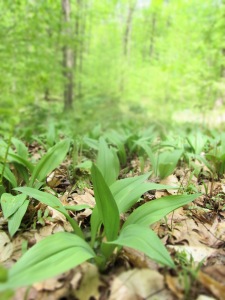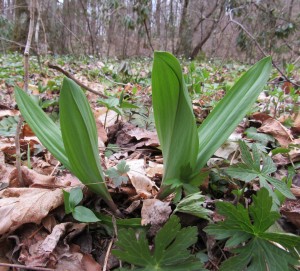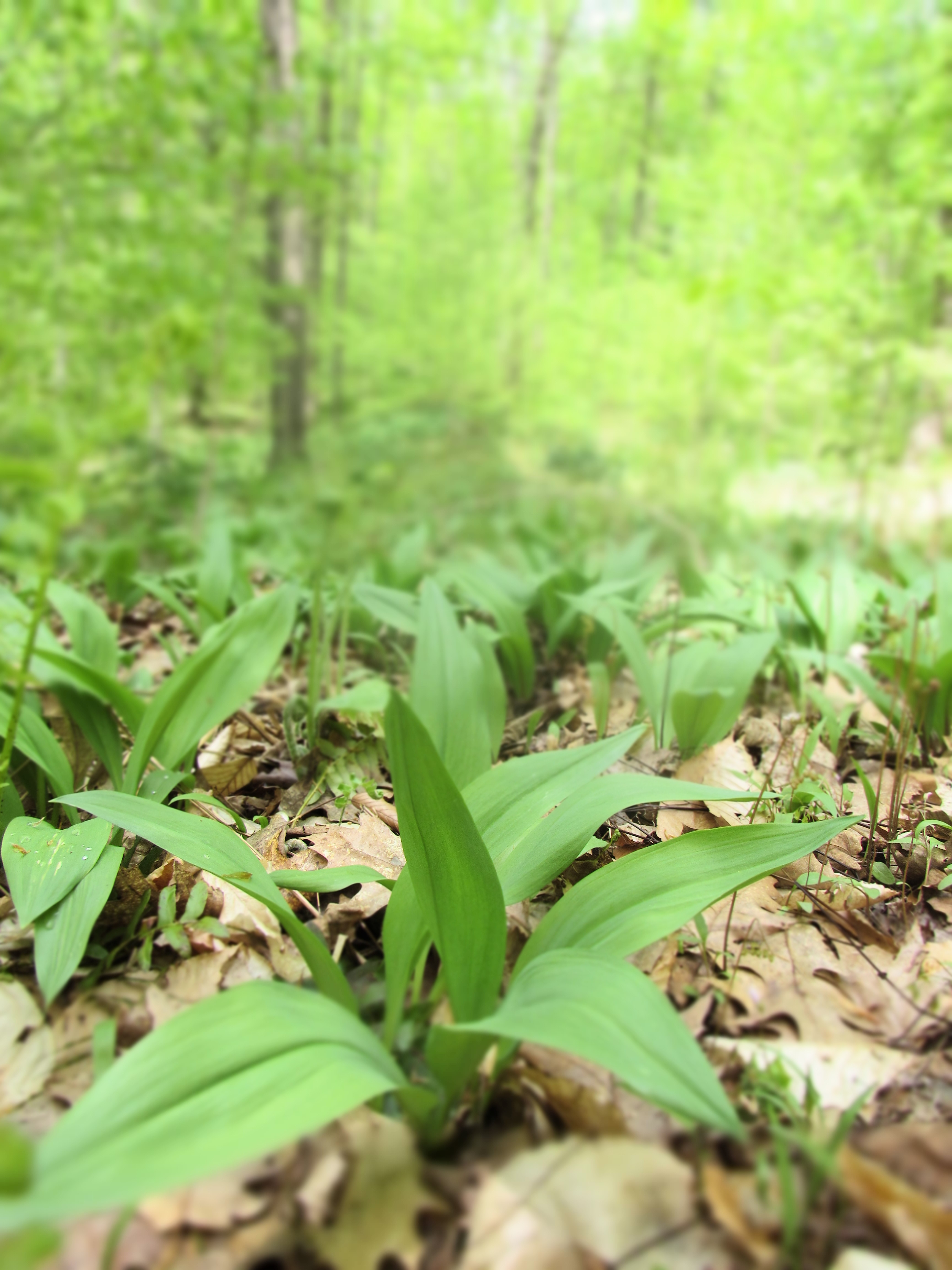
Most researchers agree that alliums and humans have been circling around each other for at least 5,000 years, and its seems pretty likely that our paleolithic ancestors were intimate with a variety of onions and leeks long before then. The allium has been so essential to human evolution that it has left its fingerprints not only in on human nourishment and medicine but also on art and mummification.
Allium Ethnobotany
A sacred object in ancient Egyptian cosmology, the layered round structure of the onion is thought by archaeologist to have symbolized eternal life. Mummies have been found with onions in a variety of locations in the body, including inside the pelvis, in front of and inside the eye sockets, and attached to the soles of the feet. In medieval Europe, onions were offered as rent payment as well as to newlyweds as gifts, while the Pilgrims schlepped the bulbs across the ocean only to find that the indigenous folks they encountered gathered plenty of alliums from the wild.
Garlic, similarly, was cultivated in central Asia around 3000 BC from its feral form Allium longicuspis into the modern domesticated Allium sativa. Unani-tibb (Arab-Greek medicine) had a hand in helping spread the use of Garlic medicinally to Europe, refining the practice and research of medicine while Europe languished in the dark and unwashed Middle Ages. Medical texts from the middle 17th century recommended garlic for treating symptoms of plague and smallpox, and in 1858, chemists and microbiologists proved garlic to be a useful antiseptic for wound infections and dysentery, allowing the bulb to become an ally to medics during WWI and II. The ethnobotanist Daniel Moerman describes indigenous North American practices that prized ramps for their blood-cleansing properties, noting the Cherokee used the juice to treat colds and earaches.
There are times, in the dead of winter, I comfort myself by reading the names of the seed varieties in the catalogs: Nodding Onion, Babington’s Leek, Elephant Garlic, Texas Star Multiplier, Gray Griselle Shallots, Grandma Pfeifer Walking Onion. It’s not only the poetry of the varieties or the imagery of green things poking through the soil. There is something comforting in domesticity of the onion, the spicy sweet of the round-bellied bulbs and all the allium-resplendent meals that lay in the cellular memories of my taste buds.
But the Ramps. . .

The current sexy celebrity of the allium family is, of course, ramps (Allium tricoccum). Also known as “wild leeks,” ramps have, in the last ten years of localorganicslowfoodartisinal mania, made headlines because, well, they are so wildly delicious. There are ramps festivals, ramps cook-offs, ramps recipe books, and seasonal ramps dishes at fancy (and not-so-fancy) establishments.
The thing is, ramps are particular creatures, each bulb growing a pair of leaves on inclined patches in damp and rich woodlands. This lily once ranged as far west as the Dakotas and Alabama, but the bulk of the current healthy patches now remain along the eastern edge of the continent, from north Georgia to northern New England. Like many food traditions that have long been the unadorned but well-loved practices of everyday working people, the ramps craze has come without much thought from marketers and consumers as to the stewardship of the ramps populations and the ecosystems from which they come. I know lots of folks who, as with their ginseng and morel hunting locations, guard the whereabouts of their woodland ramps patches, not out of selfishness only but out of concern for the well-being and future generation of these sweet and tender alliums.
This year, while heading up a long dirt road to the biggest patch I’d ever laid eyes on, I said hi to two folks plopped down in a smaller patch by the side of the road, who each harvested while sitting on their bums.
“Does that qualify as foraging?” my friend said to me, and I reflected that my teachers defined sustainable harvesting as leaving the bulb and roots, moving around the patch, and only taking one leaf out of every ten in a given area. Less likely if you are plunked down in one spot.
Cook + Nutrition

Wild foods nearly always have as dense or denser nutritional content than their domesticated kin. Like onions and garlic, ramps are high in anti-oxidants like polyphenols and cardio-protective sulphur compounds like kaempferol, which protect the epithelial lining of your vascular tissues from the scarring of oxidative stress as well as help the liver to process cholesterol. One ramp contains 10% of the recommended daily allowance (RDA) for iron. Ramps are also high in choline, a neurotransmitter needed for cognitive function, and the essential B vitamin folate.
A popular way to preserve ramps is to make pesto and freeze it. I, however, am rarely able to delay gratification when ramps are in season, feeling that the greatest way to appreciate this ephemeral treat is to sautee them fresh with butter and eat them thus with every meal while my small harvest lasts. The trick to cooking ramps is to sautee (or grill them!) them quickly and lightly or add them in at the end (like in eggs). If you needs some more ideas for ramps recipes, check out these at Serious Eats or the Huffington Post.
That’s how famous these allium are.
RAMPS FESTIVALS
Helvetia, WV. www.helvetiawv.com/events/helvetia_ramps/helvetia_ramps.htm
Hudson, NY. http://www.rampfesthudson.com/
Flagpond, TN. http://www.flagpond.com/festival/ramp/fest.htm
Ramps Dinners, The King of Stink. http://www.kingofstink.com/
Feast of the Ramson. http://www.richwooders.com/ramp/ramps.htm
RESOURCES
Jess Schreibstein, “In The Land Of Wild Ramps, It’s Festival Time.” NPR. http://www.npr.org/sections/thesalt/2013/05/08/182354602/in-the-land-of-wild-ramps-its-festival-time
The History of Onions. National Onion Association. http://www.onions-usa.org/all-about-onions/history-of-onions
“The Sustainability of Harvesting Ramps.” http://botanicalposters.com/blog/129/the-sustainability-of-harvesting-ramps/
“History of Garlic.” Vegetable Facts. http://www.vegetablefacts.net/vegetable-history/history-of-garlic/
Philipp W. Simon. “The Origin and Distribution of Garlic: How Many Garlics Are There?” Vegetable Crops Research Unit, Department of Horticulture, University of Wisconsin, Madison, WI 53706. http://www.ars.usda.gov/Research/docs.htm?docid=5232
Scott Sheu. Foods Indigenous to the Western Hemisphere: Ramps (Allium tricoccum), Wild leek, Wild Garlic. http://www.aihd.ku.edu/foods/Ramps.html
Julie Daniluk, R.H.N. “Ramp up your heart health with wild leeks.” Chatelaine. http://www.chatelaine.com/health/diet/ramp-up-your-heart-health-with-wild-leeks/
Julie R. THomson. “Ramps Are Here! Stop Freaking Out And Go Make These Recipes.” The Huffington Post. http://www.huffingtonpost.com/2015/04/10/ramp-recipes_n_1428780.html
Laurel Randolph. “15 Recipes to Celebrate Ramps.” Serious Eats. http://www.seriouseats.com/2015/04/ramp-scallion-spring-recipes.html
“Here’s 10 Ways to Cook with Ramps from you CSA.” New York Times Cooking. http://cooking.nytimes.com/68861692-nyt-cooking/1188870-heres-10-ways-to-cook-with-the-ramps-from-your-csa
